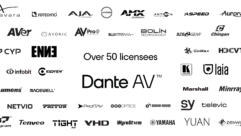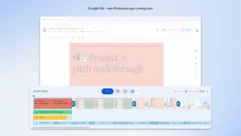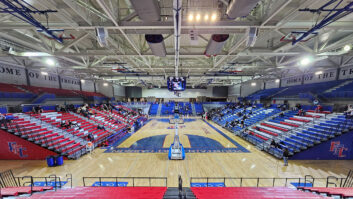

The Google-ization of AV
You know all those apps people have been writing for Apple’s popular iPad? The time is coming quickly when programmers will have another viable platform to contend with.
If you’ve been following the consumer press lately, then you’ve heard that Google is unleashing its legendary search engine and burgeoning Android operating system in the form of Google TV, a platform that will search and find video content anywhere on the Internet. Yes, now you will be able to surf between episodes of The Office and Glee just as easily as videos of cute kitties, Mentos exploding from Coca-Cola bottles, and pornography.
Pete Putman
Sony is already on board with its own version, which will be called Sony Internet TV and launched in the fourth quarter. Logitech has also shown a prototype set-top box that will allow “older” TVs (that is, any TVs with HDMI connections) to enjoy the benefits of Google TV. And let’s not forget that Crestron Electronics built it’s own search toolWorldSearchto achieve similar ends, namely finding content for its ADMS Intermedia Delivery System whether it’s local or on the Internet.
As for Google TV, it looks as though other TV manufacturers are going to jump aboard. Market leader Samsung is reportedly planning to introduce TVs using Google’s Android operating system (already found on the latest Samsung smart phones) to compete with Sony and Apple’s upgraded Internet TV product.
At the recent IFA electronics show in Berlin, Google CEO Eric Schmidt said at a press briefing that “you should expect that other TV manufacturers would love to have this product. It’s free.” And by now you know what happens when a hot new technology gains widespread acceptance in the consumer marketplace. That’s right. It winds up in pro AV. Think HDMI, super-thin flat-panel TVs, DVRs, prosumer camcorders, etc.
On another front, a recent report on the All Things Digital website (allthingsd.com) said that sales of Apple’s iPad device are essentially killing off netbooks as well as hurting sales of notebook computers. (The effect on fully featured PCs isn’t clear yet.) In fact, sales of iPads have been so strong that two companiesSamsung and Toshibahave already announced their own versions of the tablet computer. The Toshiba version runs on Android, and Samsung is expected to take the same approach. Hewlett-Packard has also said that its own prototype is in the works, and where HP and Toshiba go, so go Sony, Dell, Acer, and others.
What does any of this have to do with our industry? First of all, it may not be as important to write control and support applications for Windows or even the Mac OS as it will soon be for Android. That’s because tablet computers will become the presentation tools of choice, using high-speed wireless connections not only to stream video, audio, and electronic slideshows to projectors and large displays, but also to control the presentation space and equipment. It’s no coincidence that control system manufacturers such as Control4 and Crestron rushed to develop iPad apps.
Second, with more TV manufacturers adopting some or all of Google’s OS, it’s inevitable that you’ll see Android in professional monitors. Specifically, the NeTV functions that allow video streaming and direct access to content providers will move quickly from consumer to professional applications.
APPS OR NO APPS?
The next battlefield, already taking shape on tablet computers and TV sets, is over those apps that so many AV companies are writing. For those who don’t know, an app is a directed application that is accessed with the tap of a GUI icon, and there is a heated discussion going on right now in the TV industry whether the “search through everything and find it” approach of Google TV or the more direct “select an app and go straight there” philosophy of Apple is the right way to connect people to Internet video. Samsung has said that it will solicit apps for its TVs and is even sponsoring a developer’s conference. Presumably some of the more popular TV apps will migrate to handheld devices that can also play back videoor even play out video.
As I mentioned, writing AV-specific apps isn’t new. And at least one company has a hardware encoder that optimizes video for iPad playback. But the number of iPad users is still small compared to the base of notebook PC owners.
Several years ago, I spoke at the USAV Group’s regional dealer event in Colorado Springs, Colo. My presentation was titled “AV in the Digital Age,” and I asked the 60-plus attendees whether any of them could handle a client who wanted to be able to walk into a conference room, pull out a smart phone, and play a video through the room’s AV system–all without making a single physical connection. Only two hands went up, and I’d guess both attendees were on the short side of 30. Several of the older dealers said they wouldn’t know where to start, and wondered if it was even possible. One dealer even retorted, “We’ve seen this sort of thing before. It’s just a fad and will go away.”
Yeah, I was surprised to hear that, too.
The fact is, my scenario has become a real market need faster than I thought. By the end of next year, we’ll have at least a dozen tablets on the market, loaded with apps and high-speed wireless connections. And several display industry analysts have forecasted that by 2014, nearly half of new TVs will be equipped with an Ethernet port.
Tablets make sense for presenters. They’re smaller and lighter than notebooks, and their touchscreen interfaces are ideal for launching apps. It shouldn’t be hard to write apps that allow qualified, wireless access to basic control functions in any presentation space. Think about it: No more dedicated remote controls or guessing at touchscreen layouts. Presenters could instead save their own preferred layouts on their tablet devices. Cool, eh?
As for Android, if Google has its way, it will be running on everything from smart phones to TV sets, DVRs, and non-Apple tablets. And you’ll probably be writing AV apps to work with it, too. Giving something away for free is a powerful incentive for manufacturer adoption.
Wonder what Bill Gates thinks about that?
Pete Putman is a Pro AV senior contributing editor and former InfoComm Educator of the year. His new Pro AV e-newsletter, Wake-Up Call, covers all things digital video.










